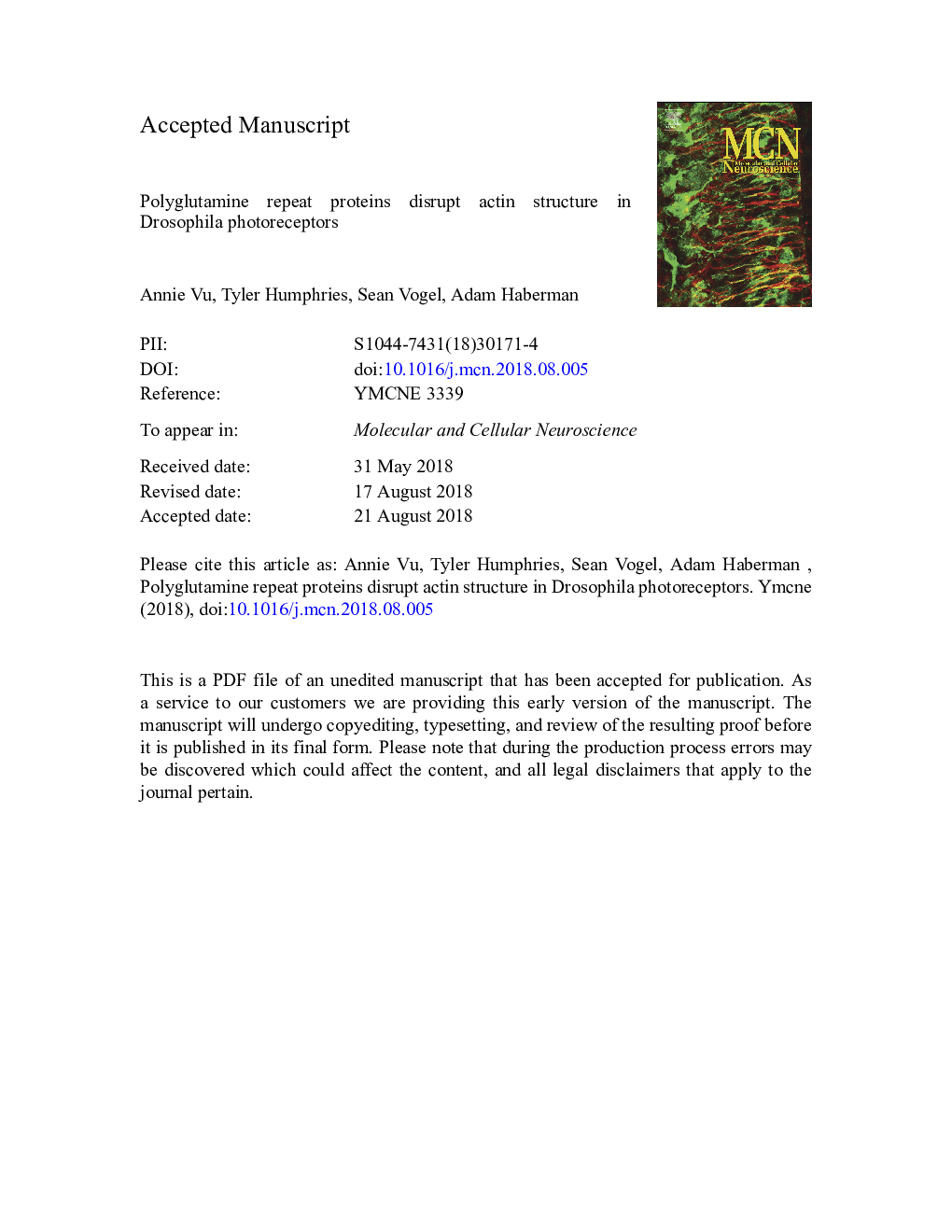| Article ID | Journal | Published Year | Pages | File Type |
|---|---|---|---|---|
| 11015345 | Molecular and Cellular Neuroscience | 2018 | 16 Pages |
Abstract
Expansions of polygutamine-encoding stretches in several genes cause neurodegenerative disorders including Huntington's Disease and Spinocerebellar Ataxia type 3. Expression of the human disease alleles in Drosophila melanogaster neurons recapitulates cellular features of these disorders, and has therefore been used to model the cell biology of these diseases. Here, we show that polyglutamine disease alleles expressed in Drosophila photoreceptors disrupt actin structure at rhabdomeres, as other groups have shown they do in Drosophila and mammalian dendrites. We show this actin regulatory pathway works through the small G protein Rac and the actin nucleating protein Form3. We also find that Form3 has additional functions in photoreceptors, and that loss of Form3 results in the specification of extra photoreceptors in the eye.
Related Topics
Life Sciences
Biochemistry, Genetics and Molecular Biology
Cell Biology
Authors
Annie Vu, Tyler Humphries, Sean Vogel, Adam Haberman,
